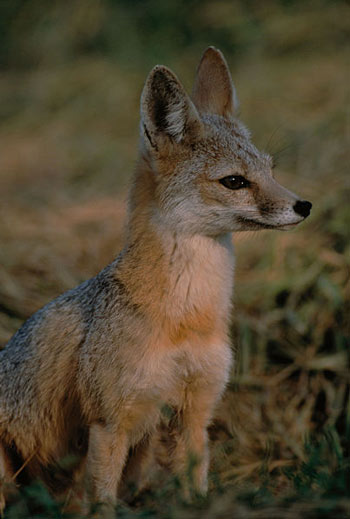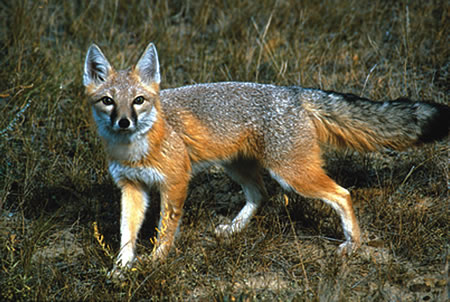Dogs, such as pointers, spaniels, retrievers and setters follow hunters into the field.
Terriers chase small game, such as foxes, badgers, and even rats.
Hounds sniff the trails of game and pursue them to their trees and burrows.
Greyhounds, wolfhounds, and deerhounds chase by sight, galloping swiftly after the prey and holding or crippling it until hunters arrive.
Bloodhounds are trained to find lost children or escaped criminals by tracking their movements.
Among the snow avalanches of the high Alps, Saint Bernard dogs have located buried travelers, and aided monks in rescue work, said to have aided in the rescue of over 2500 people over their years of use.
There is also a Newfoundland breed that is used to rescue shipwreck victims.
Collies and sheep dogs mover, or herd, livestock.
German Shepherds guide the blind, aid police officers, guard homes and businesses.
Several species of wild dogs live in the United States, 4 fox and 3 wolf species. Like cats, dogs have 4 toes on the hind foot and 5 on the front foot with the inside toe too high to show in their track. However, the footprints of the two animals are slightly different. Dogs' claws are more blunt, and cannot retract so they leave marks, especially in muddy tracks. The leading edge of the heel pad is more rounded. Cats' claws rarely leave a trace. Two lobes share the forward margin of the feline's heel.
The smallest mammal in the canine group is the kit fox. It hunts only at night and is rarely seen. When chased, the kit fox will zigzag with lightening speed, however will soon tire and must enter one of their many burrows to escape harm. They are the prey of eagles, coyotes and wolves. Close kin to the swift fox, the fastest runner among fox species, who is slightly larger and darker, with smaller ears. Read more about the kit fox at Wild Facts

the kit fox

the swift fox


Notes about the Fox:
Here are some interesting facts about the fox:- Although it is a member of the dog family, some of fox habits are very cat like as well.- The red fox can reach a speed of 48 km/h (30 mph).- Foxes live 2 to 3 years, and up to 10 years or even longer in captivity.- Like cats, foxes often play with their catch before they kill it.- Foxes have abundant ectoparasites (mites, fleas, ticks and lice).- Foxes can hold up to one kilogram of flesh in their stomachs.- Foxes can hear a watch ticking 40 yards away.- The pupils of a fox's eyes are almond-shaped rather than round.
The coyote, a small wolf, extending its range in areas with abundant ground squirrels, woodchucks, jack rabbits, reptiles, acorns, and other favored foods. Read more about the coyote at Living with Coyotes, Massachusetts Division of Fisheries and Wildlife

coyote


Two mammals that do not trail their prey but spend some of their lives in trees are the opossum and the porcupine. Neither are of the canine family, but is each the only mammal of its own family. The porcupine is the second largest rodent in North America.


Lapbooks and Reading:
Harry the Dirty Dog lapbook at HomeschoolShare
Wild Dogs, ZooBooks lapbook at HomeschoolShare
Gray Wolf resources and lapbook at HomeschoolShare...utilizing stories such as White Fang, Call of the Wild, Look to The North, A Wolf Pup Diary, etc.
various lapbook resources at HomeschoolShare connecting dogs
Endangered Species Handbook selected passages here and here
Handbook of Nature Study Outdoor Challenge #51
examples of Native American (porcupine) quill work baskets, earrings, etc.
Porcupine reading comprehension pages, downloadable PDF
No comments:
Post a Comment